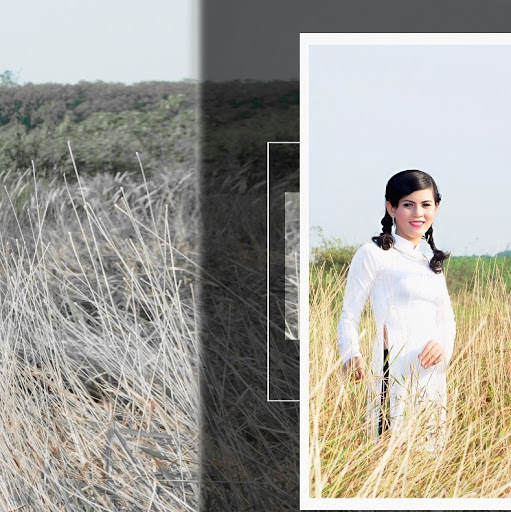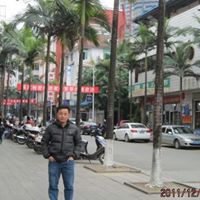Long Quoc Dinh
age ~52
from Winston Salem, NC
- Also known as:
-
- Long Nhung Dinh
- Long Q Dinh
- Long D Dinh
- Quoc Long Dinh
- Linh Phuong Dinh
- Lan Dinh
- Quoc Dinh Long
- Puoc Dinh Long
- Dinh Long
- Phone and address:
-
1158 Folkstone Ridge Ln, Winston Salem, NC 27127
3367883729
Long Dinh Phones & Addresses
- 1158 Folkstone Ridge Ln, Winston Salem, NC 27127 • 3367883729
- 630 Parkland Ct, Winston Salem, NC 27127 • 3367888714
- Bay Point, CA
- Flushing, NY
- Antioch, CA
- Concord, CA
- Land O Lakes, FL
- High Point, NC
Work
-
Position:Craftsman/Blue Collar
Education
-
Degree:High school graduate or higher
Resumes

Long Le Dinh
view source
Long Dinh
view sourceEducation:
Orange Coast College 2013 - 2016

Long Dinh
view source
Long Dinh
view source
Long Dinh
view source
Long Dinh
view source
Long Dinh
view sourceMedicine Doctors

Long T. Dinh
view sourceSpecialties:
Internal Medicine
Work:
Kaiser Permanente Medical GroupKaiser Permanente Medical Center
3501 Stockdale Hwy, Bakersfield, CA 93309
8775247373 (phone), 6613985083 (fax)
3501 Stockdale Hwy, Bakersfield, CA 93309
8775247373 (phone), 6613985083 (fax)
Languages:
English
Spanish
Tagalog
Spanish
Tagalog
Description:
Dr. Dinh works in Bakersfield, CA and specializes in Internal Medicine. Dr. Dinh is affiliated with San Joaquin Community Hospital.

Long Thai Dinh
view sourceSpecialties:
Hospitalist
Internal Medicine
Internal Medicine
Education:
St. George's University (2000)
Us Patents
-
Junction-Based Field Emission Structure For Field Emission Display
view source -
US Patent:6351254, Feb 26, 2002
-
Filed:Jul 6, 1998
-
Appl. No.:09/110166
-
Inventors:Long N. Dinh - Concord CA
Mehdi Balooch - Berkeley CA
William McLean, II - Oakland CA
Marcus A. Schildbach - Livermore CA -
Assignee:The Regents of the University of California
-
International Classification:G09G 320
-
US Classification:345 752, 313310, 3151693
-
Abstract:A junction-based field emission display, wherein the junctions are formed by depositing a semiconducting or dielectric, low work function, negative electron affinity (NEA) silicon-based compound film (SBCF) onto a metal or n-type semiconductor substrate. The SBCF can be doped to become a p-type semiconductor. A small forward bias voltage is applied across the junction so that electron transport is from the substrate into the SBCF region. Upon entering into this NEA region, many electrons are released into the vacuum level above the SBCF surface and accelerated toward a positively biased phosphor screen anode, hence lighting up the phosphor screen for display. To turn off, simply switch off the applied potential across the SBCF/substrate. May be used for field emission flat panel displays.
-
Apparatus For Depositing A Low Work Function Material
view source -
US Patent:7118630, Oct 10, 2006
-
Filed:Aug 10, 2000
-
Appl. No.:09/636134
-
Inventors:Mehdi Balooch - Berkeley CA, US
Long N. Dinh - Concord CA, US
Wigbert J. Siekhaus - Berkeley CA, US -
Assignee:The Regents of the University of California - Oakland CA
-
International Classification:C23C 16/00
-
US Classification:118726, 427596, 427597
-
Abstract:Short-wavelength photons are used to ablate material from a low work function target onto a suitable substrate. The short-wavelength photons are at or below visible wavelength. The elemental composition of the deposit is controlled by the composition of the target and the gaseous environment in which the ablation process is performed. The process is carried out in a deposition chamber to which a short-wavelength laser is mounted and which includes a substrate holder which can be rotated, tilted, heated, or cooled. The target material is mounted onto a holder that spins the target during laser ablation. In addition, the deposition chamber is provided with a vacuum pump, an external gas supply with atomizer and radical generator, a gas generator for producing a flow of molecules on the substrate, and a substrate cleaning device, such as an ion gun. The substrate can be rotated and tilted, for example, whereby only the tip of an emitter can be coated with a low work function material.
-
Generation Of Low Work Function, Stable Compound Thin Films By Laser Ablation
view source -
US Patent:62356151, May 22, 2001
-
Filed:Feb 15, 2000
-
Appl. No.:9/504302
-
Inventors:Long N. Dinh - Concord CA
William McLean - Oakland CA
Mehdi Balooch - Berkeley CA
Edward J. Fehring - Dublin CA
Marcus A. Schildbach - Livermore CA -
Assignee:The Regents of the University of California - Oakland CA
-
International Classification:H01L 2120
H01L 2136 -
US Classification:438487
-
Abstract:Generation of low work function, stable compound thin films by laser ablation. Compound thin films with low work function can be synthesized by simultaneously laser ablating silicon, for example, and thermal evaporating an alkali metal into an oxygen environment. For example, the compound thin film may be composed of Si/Cs/O. The work functions of the thin films can be varied by changing the silicon/alkali metal/oxygen ratio. Low work functions of the compound thin films deposited on silicon substrates were confirmed by ultraviolet photoelectron spectroscopy (UPS). The compound thin films are stable up to 500. degree. C. as measured by x-ray photoelectron spectroscopy (XPS). Tests have established that for certain chemical compositions and annealing temperatures of the compound thin films, negative electron affinity (NEA) was detected. The low work function, stable compound thin films can be utilized in solar cells, field emission flat panel displays, electron guns, and cold cathode electron guns.
-
Low Work Function, Stable Thin Films
view source -
US Patent:61627070, Dec 19, 2000
-
Filed:May 18, 1998
-
Appl. No.:9/080096
-
Inventors:Long N. Dinh - Concord CA
William McLean - Oakland CA
Mehdi Balooch - Berkeley CA
Edward J. Fehring - Dublin CA
Marcus A. Schildbach - Livermore CA -
Assignee:The Regents of the University of California - Oakland CA
-
International Classification:H01L 2120
-
US Classification:438487
-
Abstract:Generation of low work function, stable compound thin films by laser ablation. Compound thin films with low work function can be synthesized by simultaneously laser ablating silicon, for example, and thermal evaporating an alkali metal into an oxygen environment. For example, the compound thin film may be composed of Si/Cs/O. The work functions of the thin films can be varied by changing the silicon/alkali metal/oxygen ratio. Low work functions of the compound thin films deposited on silicon substrates were confirmed by ultraviolet photoelectron spectroscopy (UPS). The compound thin films are stable up to 500. degree. C. as measured by x-ray photoelectron spectroscopy (XPS). Tests have established that for certain chemical compositions and annealing temperatures of the compound thin films, negative electron affinity (NEA) was detected. The low work function, stable compound thin films can be utilized in solar cells, field emission flat panel displays, electron guns, and cold cathode electron guns.
-
Low Work Function Surface Layers Produced By Laser Ablation Using Short-Wavelength Photons
view source -
US Patent:61208574, Sep 19, 2000
-
Filed:May 18, 1998
-
Appl. No.:9/080109
-
Inventors:Mehdi Balooch - Berkeley CA
Long N. Dinh - Concord CA
Wigbert J. Siekhaus - Berkeley CA -
Assignee:The Regents of the University of California - Oakland CA
-
International Classification:C23C 1428
B05D 512 -
US Classification:427596
-
Abstract:Short-wavelength photons are used to ablate material from a low work function target onto a suitable substrate. The short-wavelength photons are at or below visible wavelength. The elemental composition of the deposit is controlled by the composition of the target and the gaseous environment in which the ablation process is performed. The process is carried out in a deposition chamber to which a short-wavelength laser is mounted and which includes a substrate holder which can be rotated, tilted, heated, or cooled. The target material is mounted onto a holder that spins the target during laser ablation. In addition, the deposition chamber is provided with a vacuum pump, an external gas supply with atomizer and radical generator, a gas generator for producing a flow of molecules on the substrate, and a substrate cleaning device, such as an ion gun. The substrate can be rotated and tilted, for example, whereby only the tip of an emitter can be coated with a low work function material.
-
Low Work Function, Stable Compound Clusters And Generation Process
view source -
US Patent:6019913, Feb 1, 2000
-
Filed:May 18, 1998
-
Appl. No.:9/080110
-
Inventors:Long N. Dinh - Concord CA
Mehdi Balooch - Berkeley CA
Marcus A. Schildbach - Livermore CA
Alex V. Hamza - Livermore CA
William McLean - Oakland CA -
Assignee:The Regents of the University of California - Oakland CA
-
International Classification:H01J 902
-
US Classification:252516
-
Abstract:Low work function, stable compound clusters are generated by co-evaporation of a solid semiconductor (i. e. , Si) and alkali metal (i. e. , Cs) elements in an oxygen environment. The compound clusters are easily patterned during deposition on substrate surfaces using a conventional photo-resist technique. The cluster size distribution is narrow, with a peak range of angstroms to nanometers depending on the oxygen pressure and the Si source temperature. Tests have shown that compound clusters when deposited on a carbon substrate contain the desired low work function property and are stable up to 600. degree. C. Using the patterned cluster containing plate as a cathode baseplate and a faceplate covered with phosphor as an anode, one can apply a positive bias to the faceplate to easily extract electrons and obtain illumination.
Name / Title
Company / Classification
Phones & Addresses
Owner
California Nails
Beauty Shop · Nail Salons · Manicuring
Beauty Shop · Nail Salons · Manicuring
643 Peters Crk Pkwy, Winston Salem, NC 27103
3367258186
3367258186
Wikipedia

Battle of Lg Dinh
view sourceThe Battle of Long Dinh was a battle of the Vietnam War that involved the People's Liberation Armed Forces (Vit Cng) and the Army of the Republic of Vietnam (ARVN).
Plaxo

Vu Dinh Long
view sourceXuan Xuan Dinh Tu Liem Ha Noi
Classmates

Long Dinh
view sourceSchools:
Emory St. High School Dalton GA 1990-1994

Long Dinh, South Junior H...
view source
Emory St. High School, Da...
view sourceGraduates:
Doug Barnes (1988-1990),
Long Dinh (1990-1994),
Jonathan Kim (1994-1998),
Frank Lieppe (1984-1987)
Long Dinh (1990-1994),
Jonathan Kim (1994-1998),
Frank Lieppe (1984-1987)

Buena Park High School, B...
view sourceGraduates:
Gloria Vallejo (1965-1969),
long dinh (1996-2000),
Colleen Matthews (1977-1981),
Larry Stewart (1991-1995),
Leigha Smith (1984-1988)
long dinh (1996-2000),
Colleen Matthews (1977-1981),
Larry Stewart (1991-1995),
Leigha Smith (1984-1988)
Youtube
Myspace
Googleplus

Long Dinh
Work:
DVTM - Quanlykinhdoanh
Education:
TotnghiepDH - Quanlykinhdoanh

Long Dinh

Long Dinh

Long Dinh

Long Dinh

Long Dinh

Long Dinh

Long Dinh

Long Phi Dinh
view source
Long Pham Dinh
view source
Long Nguyen Dinh
view source
Long Vo Dinh
view source
Long Nguyen Dinh
view source
Long Tran Dinh
view source
Long Nguyen Dinh
view source
Long Bui Dinh
view sourceFlickr
Get Report for Long Quoc Dinh from Winston Salem, NC, age ~52

![[Engsub+Kara YANST] Ha Noi - Dinh Manh Ninh (Celeb... [Engsub+Kara YANST] Ha Noi - Dinh Manh Ninh (Celeb...](https://i.ytimg.com/vi/4U4Tr9gHZBA/0.jpg)













